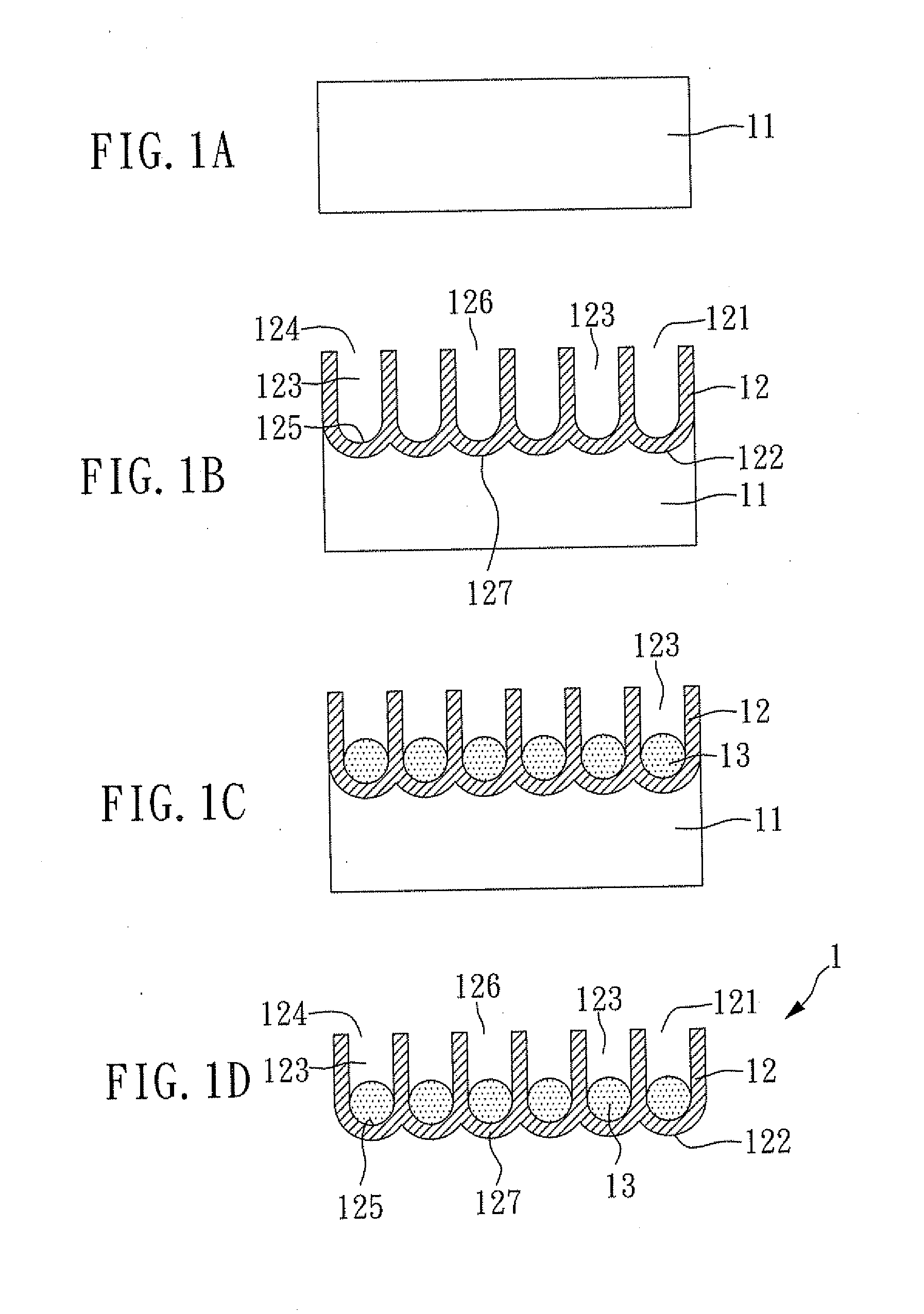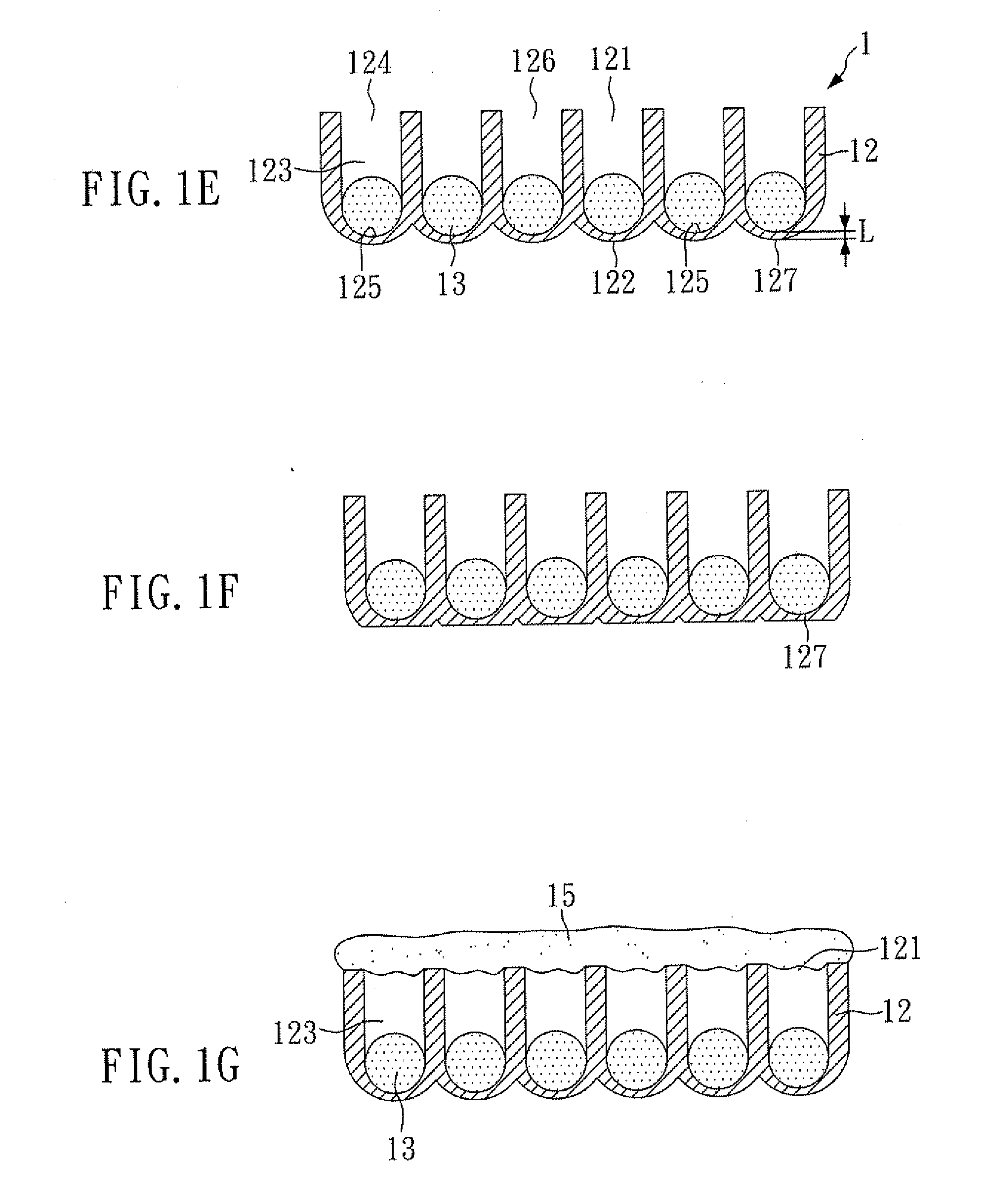Sensor chip for biomedical and micro-nano structured substances and method for manufacturing the same
a biomedical and micronano technology, applied in the direction of optical radiation measurement, instruments, spectrometry/spectrophotometry/monochromators, etc., can solve the problems of unstable signals, signal may be sometimes strong, and the activity of the sensor may be affected, so as to enhance the adhesion of specific bacteria, enhance the adhesion of analyte onto the sensor chip, and enhance the intensity of signals
- Summary
- Abstract
- Description
- Claims
- Application Information
AI Technical Summary
Benefits of technology
Problems solved by technology
Method used
Image
Examples
example 1
[0058]FIGS. 1A to 1E show a process to manufacture a sensor chip according to the present example. As shown in FIG. 1A, an aluminum plate 11 is first provided in the step (A). Then, as shown in FIG. 1B, the aluminum plate 11 is subjected to an anodizing treatment to form an aluminum oxide film 12 on the surface of the aluminum plate 11 in the step (B). The film 12 is made of a porous material with nano-pores, and has a first surface 121 and a second surface 122 opposite to the first surface 121. In addition, the anodized aluminum oxide film 12 has a plurality of long tube shaped holes 123. Each of the holes 123 has a first end 124 and a second end 125. The first end 124 has an opening 126 at the first surface 121 of the anodized aluminum oxide film 12, while the second end 125 of the hole 123 is closed and located at the second surface 122 of the anodized aluminum oxide film 12. The closed second end 125 is covered by an aluminum oxide layer 127. Subsequently, as shown in FIG. 1C, t...
example 2
[0062]The sensor chip of the present example is manufactured by the same method as illustrated in Example 1, except that the present example uses a physical method (e.g. grinding) to thin the aluminum oxide layer 127 in the step (E), as shown in FIG. 1F.
[0063]In the present example, since no acid reagents are used in the physical method for thinning the aluminum oxide layer 127, the environmental pollution can be reduced. Besides, in the present example, rinsing and drying steps are unnecessary and the method is simpler.
example 3
[0064]After the sensor chip 1 shown in FIG. 1E according to Example 1 is manufactured, a step (F) of forming a passivation layer 15, which may be made of, for example, silicon oxide, on the first surface 121 of the anodized aluminum oxide film 12 is performed, as shown in FIG. 1G. The passivation layer 15 can protect the metal nanoparticles 13 in the holes 123 from being oxidized or prevent the entrance of moisture and impurities.
PUM
| Property | Measurement | Unit |
|---|---|---|
| Thickness | aaaaa | aaaaa |
| Thickness | aaaaa | aaaaa |
| Thickness | aaaaa | aaaaa |
Abstract
Description
Claims
Application Information
 Login to View More
Login to View More - R&D
- Intellectual Property
- Life Sciences
- Materials
- Tech Scout
- Unparalleled Data Quality
- Higher Quality Content
- 60% Fewer Hallucinations
Browse by: Latest US Patents, China's latest patents, Technical Efficacy Thesaurus, Application Domain, Technology Topic, Popular Technical Reports.
© 2025 PatSnap. All rights reserved.Legal|Privacy policy|Modern Slavery Act Transparency Statement|Sitemap|About US| Contact US: help@patsnap.com



